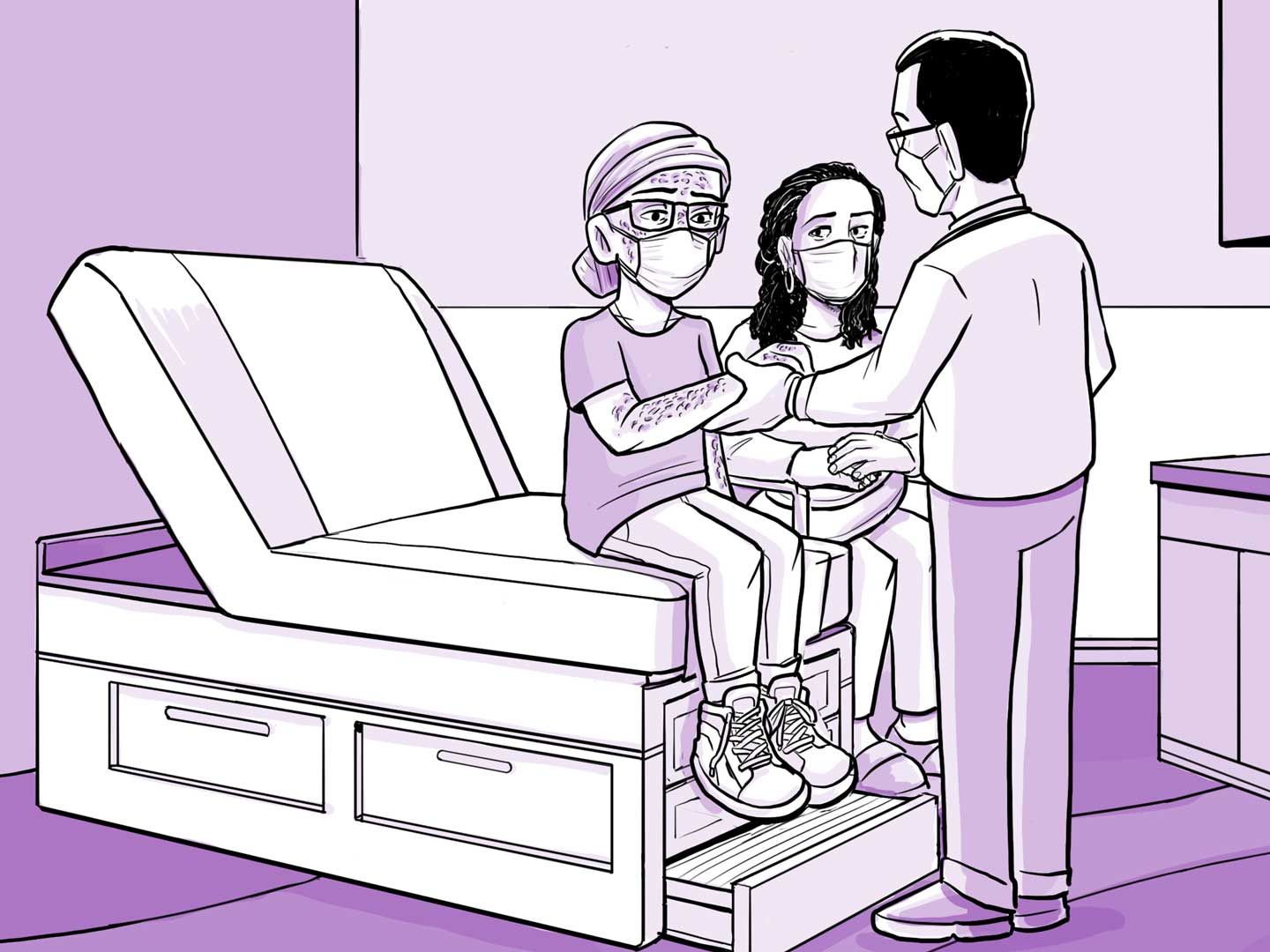A few days later
Nia is 13
A few days later
Nia is 13
This is Nia’s first follow up visit. Everyone wears a mask, because germs can make Nia very sick.
You will have many follow up visits with your doctor.
- It is like a regular checkup. You don’t stay in the hospital.
- You will get blood tests.
- Your doctor checks for side effects or other problems.
- Your doctor checks if you are sick from any germs, because your body is still not ready to fight germs.
- Your doctor will give you medicines if you need them.
You will have follow up visits for several years.
- Your doctor will explain the long-term treatment plan.
- At first, you will see your doctor about once every week. Later, you will see your doctor once every few months. After a few years, you might see your doctor only once a year.
You can still have some problems after you leave the hospital.
-
You can still get very sick from germs. Your body cannot fight germs (immunosuppressed) for about 6 months.
-
If you have graft versus host disease, your doctors will give you medicine to help treat the problems.
You will be very immunosuppressed (unable to fight germs).
- Chemotherapy kills your old blood-making stem cells. This means you will not have enough white blood cells (immune system cells) for a few months.
- The donated stem cells will start making new white blood cells, but you can still get very sick from germs for a few weeks or months after chemotherapy.
- For the first few months, you are at the highest risk of getting very sick from germs. You can get very sick for about 6 to 12 months after chemotherapy.
- In the hospital, they take extra care to keep germs away from you. Your doctors will also give you medicine to fight germs once you go home.
- You may not be able to visit friends or meet with loved ones for a few weeks even after you have discharged from the hospital.
Graft versus host disease (GvHD) is when the donor cells attack your body.
- The donated blood-making stem cells make immune cells that ‘attack’ your body.
- These new white blood cells can get confused because your body is not the same as the donor’s body. This is why they can attack your body.
- The bone marrow transplant can still work, even if you have this problem.
- Your doctors will give you medicine to try to prevent it or stop it if it happens.
- People may need to take these medicines to prevent or treat GvHD for several months after transplant.
- The medicine does not work for some people. They can get very sick or die.
If graft versus host disease (GvHD) happens, you can have:
- Rash and skin ulceration
- Diarrhea (watery poop)
- Yellow skin and eyes
- Dry and scaly skin
- Darkening of skin
- Hardening of skin texture
- Skin scarring/restriction of joints
- Dryness and sores in the mouth and esophagus
- Dry eyes and redness in the eyes
- Dryness of the vagina and other surfaces
- Drying and scarring of lungs
- Liver injury or liver failure
